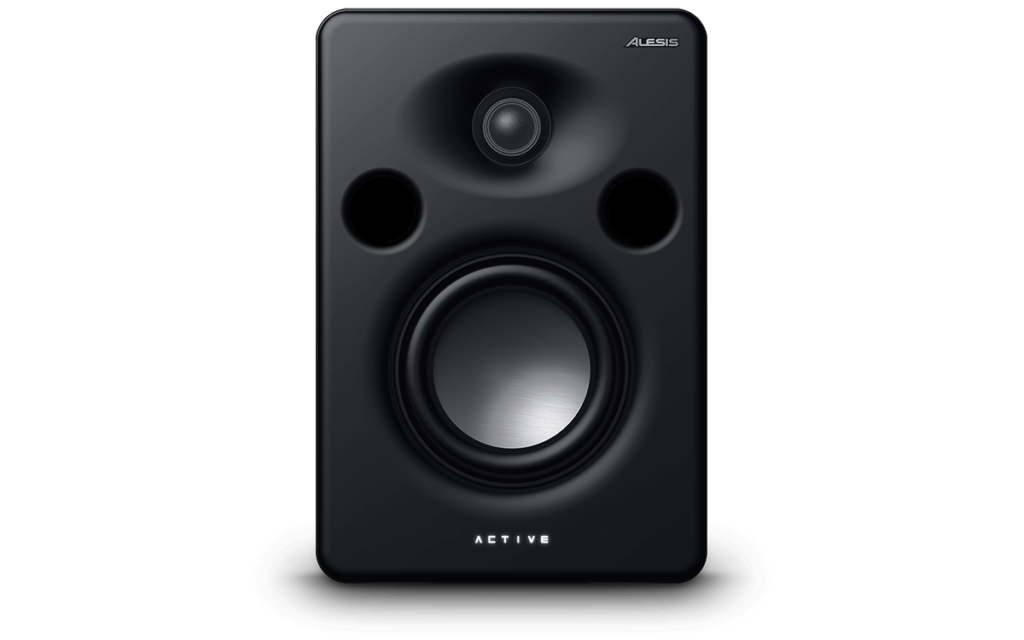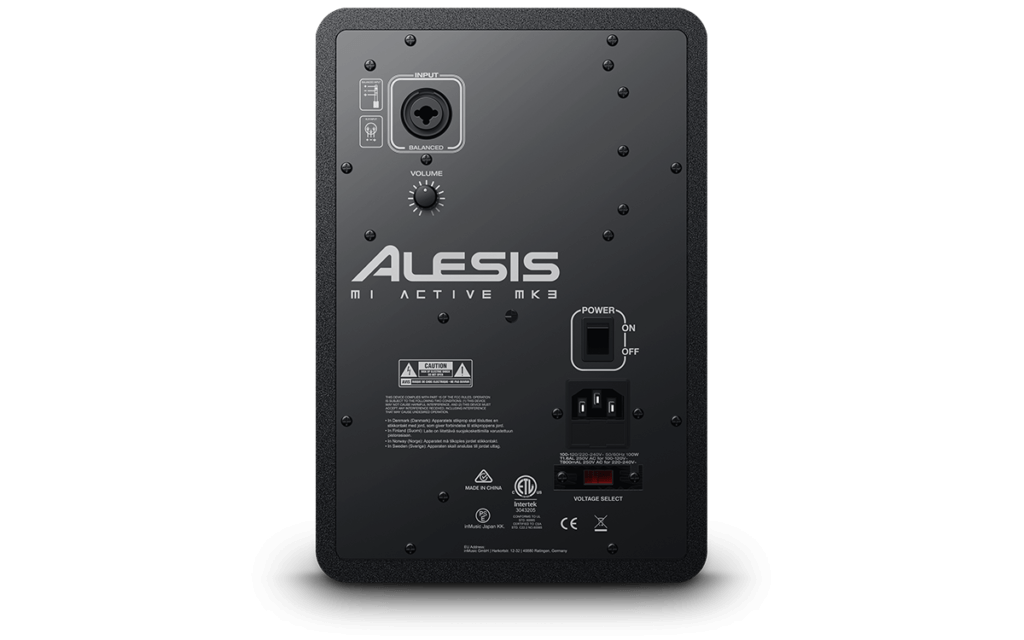The new M1 Active MK3 powered studio monitors from Alesis prove to be one of the best bargains in the business. Read our expert review below for our reasons why.
Build and Design Quality
Lifting the new Alesis M1 Active MK3 monitors out of their packaging, we were greeted with a surprisingly robust-feeling enclosure, housing a newly-designed 5-inch aluminum woofer and 1” silk dome tweeter. In this price range, a few things stand out. For starters, most other companies will offer a 3-inch main driver at $99, not 5-inch, and oftentimes you’ll find a ¾” tweeter to handle all the highs. So, bonus points to Alesis for including, what we feel, are the right choices for drivers to meet the most basic home studio needs.
The units are powered, as is to be expected, with the mains connecting at the rear of the unit, lighting up the “Active” front text when power is flowing. While it would have been nice to access a power switch from the front panel, it’s not a deal breaker. The new enclosure design also includes front-firing bass ports, which help extend the low-end frequencies with a bit of punch, while eliminating boominess (at least in our experiences).

Sound Quality
The monitors themselves are certainly aesthetically pleasing, but none of that matters if the sound quality is lacking. And at just $99 per speaker, we were pleasantly surprised at the clarity and lack of “congestion” these units served up. Bass was tight, clear and un-muddled, even with heavy synth testing through our DAW. Mids were well-served, too, with perhaps a slight mid-boost tendency, but nothing too colorful. And highs were crisp with being brittle or shrill.
Overall, we tracked several scratch sessions in Studio One and Cubase for a few weeks while these monitors were installed in the office studio, and had nothing but good things to say for the audio reproduction capabilities. With a 45-22kHz frequency response, you get deep, rich bass tones that other monitors in this price class struggle with, and with a bi-amp design that delivers 40 watts to the main driver and 25 watts to the tweeter, everything comes through without clipping (even at high volume) — which makes us happy to report some of the best headroom we’ve experienced in the sub-$100 market.

Connectivity
Here’s perhaps the only minor quibble we have. While it’s great to have a balanced XLR+1/4” combo jack on the rear of the unit, an additional set of RCA stereo inputs or at the very least a 3.5mm mini stereo input would have made a nice addition and could have made these monitors even more versatile. While most home studio interfaces and gear will have no problem interfacing with the M1 Active MK3’s, some of the more mobile-friendly producers and beatmakers out there might have appreciated easier laptop connectivity via traditional stereo cables. But again, a pretty minor thing.
Value
We’ve harped on it quite a bit, but when we routinely see 3” drivers at this price point, our ears perk up when a manufacturer is willing to offer a new design with larger woofers, and even proprietary features like Alesis’ “precision-designed waveguide,” which aids in stereo imaging, allowing you to still get a quality sweet spot even if you’re not dead-center between the L and R speakers.
All told, we’re super happy with what Alesis has put together in the M1 Active MK3 studio monitors. They’re priced to move, they sound great and they offer a simple, no-nonsense workhorse addition to your studio’s desktop.
Pros:
Great value, great sound, aesthetically-pleasing design and small footprint.
Cons:
Front power switch and RCA inputs would have been nice, but neither are a deal-breaker.
